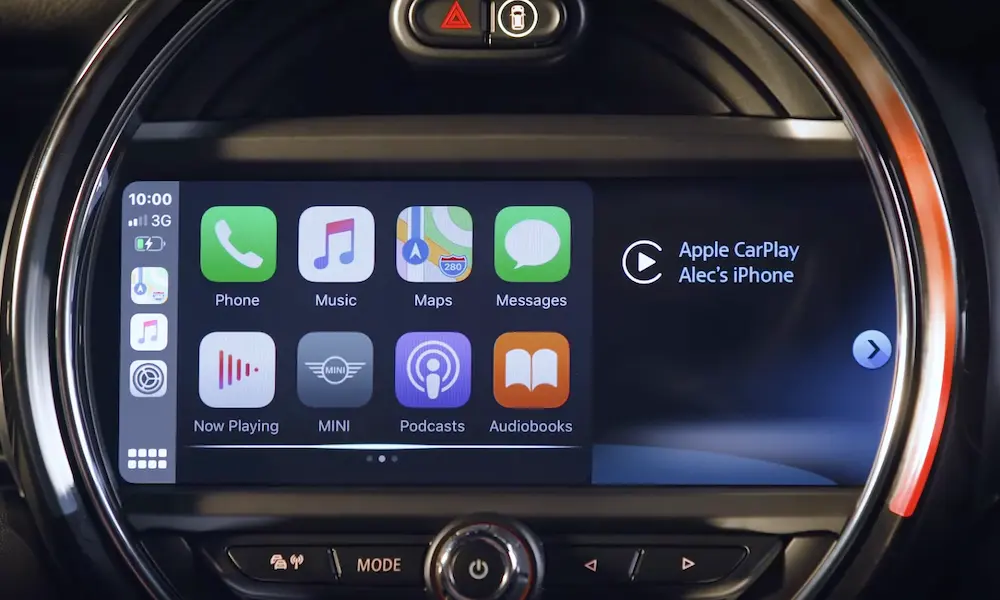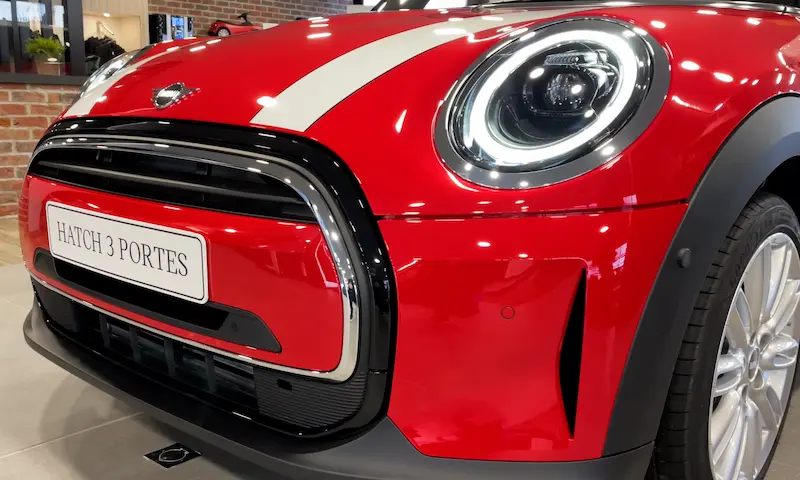If you’re a Mini Cooper owner, you might have come across the P2096 trouble code at some point. This code indicates that the post-catalytic fuel trim system is too lean on Bank 1, meaning it’s getting too much air and not enough fuel for a perfect balance.
The issue can manifest in various ways, such as your Mini not driving well or a “check engine” light appearing. A known technical service bulletin (TSB) #M12 01 06 addresses this problem in the aftermarket documentation TSB. Understanding the P2096 code is essential to keep your Mini running smoothly and efficiently.
What Is P2096 Code
P2096 code is an OBD-II trouble code, which stands for On-Board Diagnostics. It refers to the post-catalyst fuel trim system being too lean on Bank 1. This means that your engine is receiving too much air and not enough fuel for an ideal mixture, leading to an unbalanced combustion process. This condition is detected by the oxygen sensors, and the code is used by most manufacturers to identify the issue.
In simpler terms, the P2096 code indicates that there might be a problem with your vehicle’s fuel system. The oxygen sensor measures the unburned oxygen in the exhaust system and helps in assessing the efficiency of your catalytic converter. If the sensor detects an issue with the air-fuel mixture, it will trigger the P2096 fault code.
It’s important to note that while the most obvious reason for a P2096 code is a faulty oxygen sensor, it doesn’t always mean that the sensor is the main culprit. There could be other factors contributing to this issue, such as an exhaust leak, a malfunctioning injector, or even a faulty catalytic converter. In order to correctly diagnose and fix the P2096 code, you should seek professional help or use a reliable diagnostic tool.
So, when you encounter a P2096 code, it’s essential to address the issue to avoid any potential damage to your Mini Cooper or other vehicle models. By taking prompt action, you can ensure that your car runs efficiently, and you can avoid the risk of further complications or costly repairs. Keep in mind that some symptoms, such as poor engine performance or reduced fuel efficiency, might be associated with this trouble code.
Recognizing the Symptoms
As a Mini Cooper owner, you should be aware of the symptoms related to the P2096 fault code. Identifying these symptoms early can help you address the issue before it becomes a more significant problem. In this section, we will discuss three common symptoms of the P2096 fault code: Poor Fuel Economy, Rough Idle, and Poor Acceleration.
Poor Fuel Economy
When your Mini Cooper experiences a P2096 fault code, one of the most noticeable symptoms is poor fuel economy. This is because the post-catalyst fuel trim system is too lean on Bank 1, causing an imbalance in air and fuel mixture. As a result, your vehicle may consume more fuel than usual. Be attentive to sudden changes in your car’s fuel consumption, as it might indicate an issue with the oxygen sensor or the catalytic converter.
Rough Idle
Another symptom of the P2096 fault code is a rough idle. If there is too much air and not enough fuel in the post-catalyst fuel trim system, your Mini Cooper may experience misfires and uneven engine performance. This can cause the vehicle to shake or vibrate while idling, making it uncomfortable for you as a driver. If you notice this symptom, it is essential to get it checked by a mechanic as soon as possible.
Poor Acceleration
Poor acceleration is a common symptom of the P2096 fault code. The improper balance of air and fuel in the system can lead to a lack of power and slow acceleration. You may notice that your Mini Cooper takes longer to reach desired speeds, struggles to maintain speeds, or exhibits other signs of decreased performance. If you observe any of these issues, consult a professional mechanic for a thorough inspection and diagnosis of your vehicle.
By being aware of these common P2096 symptoms, you can take the necessary steps to ensure your Mini Cooper runs smoothly and maintains optimal performance.
Possible Causes of Mini Cooper P2096 Code
Fuel and Exhaust System
If your Mini Cooper is displaying a P2096 code, it could be due to issues within the fuel and exhaust system. A common cause is an air leak, which leads to a lean mixture when there’s not enough fuel in the engine. Unmetered air can enter the system through a vacuum leak or an exhaust leak, both of which can lead to lean conditions. Fuel contamination or low fuel pressure may also be contributing factors.
Exhaust leaks, especially around the exhaust manifold or catalytic converter, can cause the code P2096. A cracked exhaust manifold or a failing catalytic converter can also be a culprit. Other potential causes include a clogged fuel filter and a failing fuel pump.
Oxygen and Mass Air Flow Sensors
The presence of the P2096 code may also indicate a problem with your oxygen sensors or mass air flow sensor. These sensors monitor the fuel-to-air ratio in your engine’s combustion chamber, detecting whether the mixture is too lean (too much air, not enough fuel). Oxygen sensors can get contaminated or wear out over time, leading to inaccurate readings and possible lean conditions.
Issues with the mass air flow sensor can result in unmetered air entering the engine or a misreading of the air volume in the combustion chamber. A malfunctioning mass airflow sensor, or even a dirty or damaged sensor, can lead to the P2096 code.
Computer and Wiring Issues
In some cases, the P2096 code may be triggered due to problems with your Mini Cooper’s powertrain control module (PCM), also known as the engine control unit (ECU). The PCM is responsible for regulating the air-fuel mixture, and any issues with this computer module can affect your vehicle’s performance. Wiring and electrical connectors associated with the PCM and oxygen sensors can also be responsible for the P2096 code. Make sure to check for any damaged or corroded connections to help resolve the issue.
How to Fix P2096 on a Mini Cooper
Repairing Leakages and Changing Filters
One of the first steps you should take to address code P2096 on your Mini Cooper is to inspect for any leakages in the exhaust or air systems. This could include exhaust leaks or air leaks caused by damaged or worn-out gaskets. Remember to also check for any clogged filters, such as the air filter or fuel filter. Replacing damaged gaskets and clogged filters can help resolve the issue of your Mini Cooper’s post-catalyst fuel trim system being too lean.
Replacing Sensors
Another possible cause of the P2096 code may be the malfunction of various sensors related to the fuel trim system. Inspect both the oxygen sensors and the mass airflow sensor for any damages or wear. Replacing any faulty sensors helps maintain an optimal air-fuel mixture, ultimately addressing the problem. If you aren’t confident in diagnosing or replacing these sensors yourself, it’s a good idea to consult with a mechanic for professional help.
Mechanical Repairs
In some cases, P2096 might be an indication of a more significant mechanical issue. It is essential to consult with a mechanic if the previous steps do not resolve the P2096 code. They can perform a thorough examination of your Mini Cooper’s exhaust and fuel systems, as well as the related sensors and components, to pinpoint the source of the problem. Once identified, your mechanic can carry out any necessary repairs to ensure that your Mini Cooper operates optimally and the P2096 code is resolved.
Conclusion
In case of a P2096 code in your Mini Cooper, it indicates that the post-catalyst fuel trim system is too lean on Bank 1. This means that there is an imbalance due to too much air and insufficient fuel. The oxygen sensors detect this condition. Although a faulty oxygen sensor might be the most obvious reason, it’s not always the cause.
For a 2005 Mini Cooper that displays the P2096 code and drives poorly, there is a technical service bulletin (TSB), #M12 01 06 that addresses this specific issue. By understanding the code and referring to the TSB, you can take appropriate steps to rectify the problem and ensure your Mini Cooper runs smoothly.












